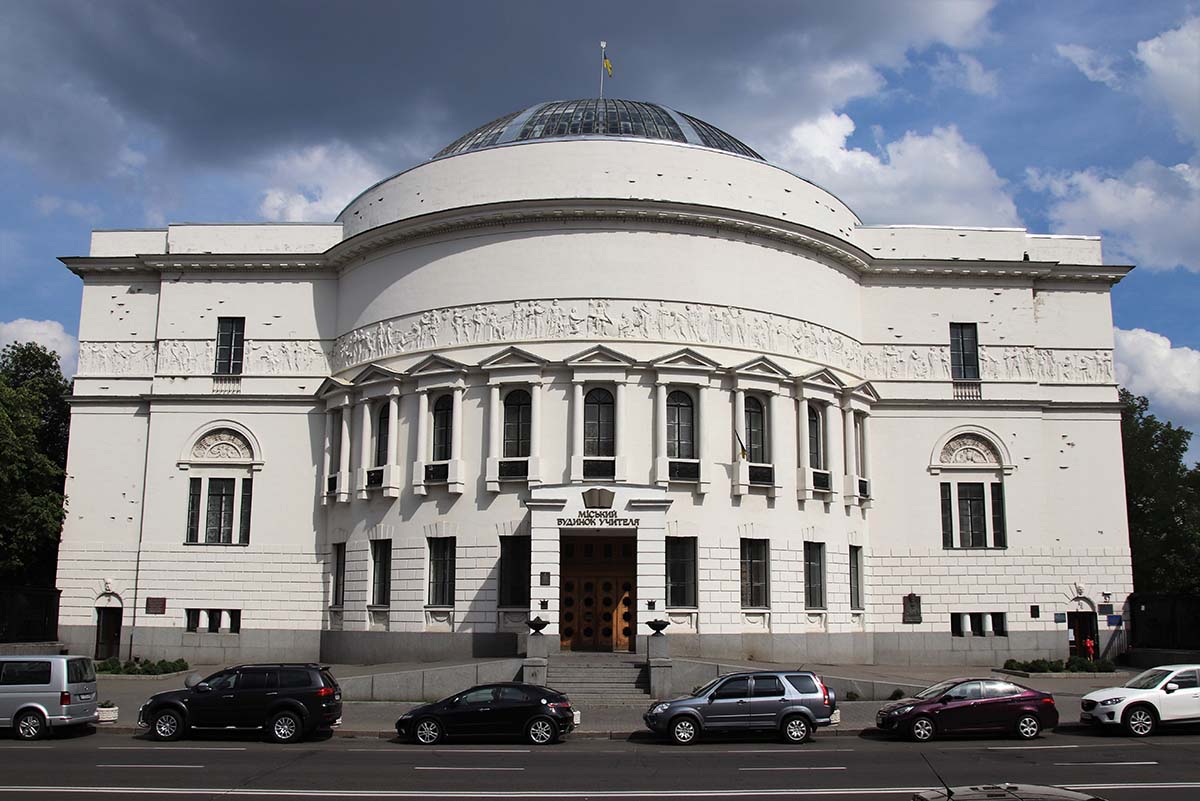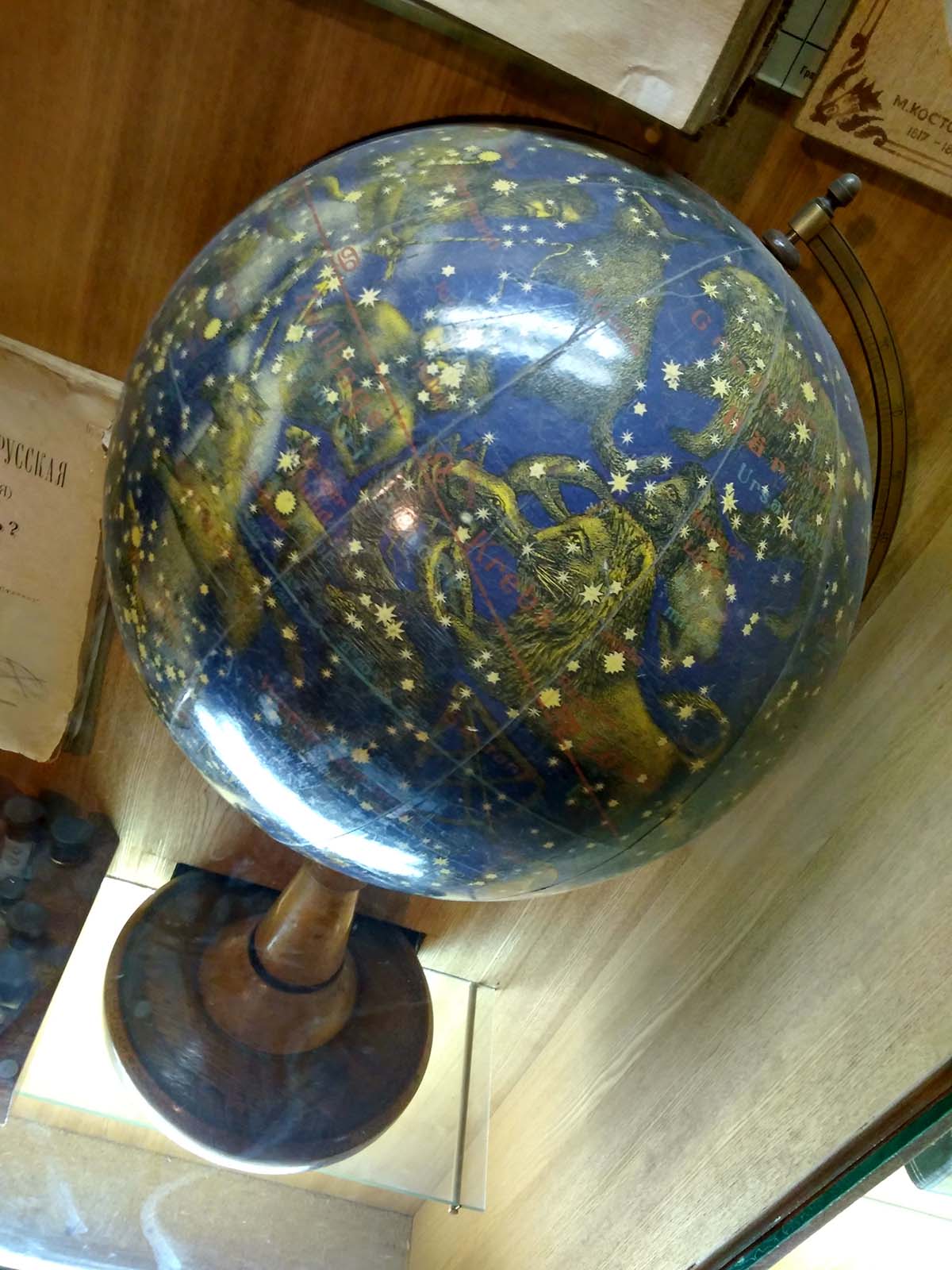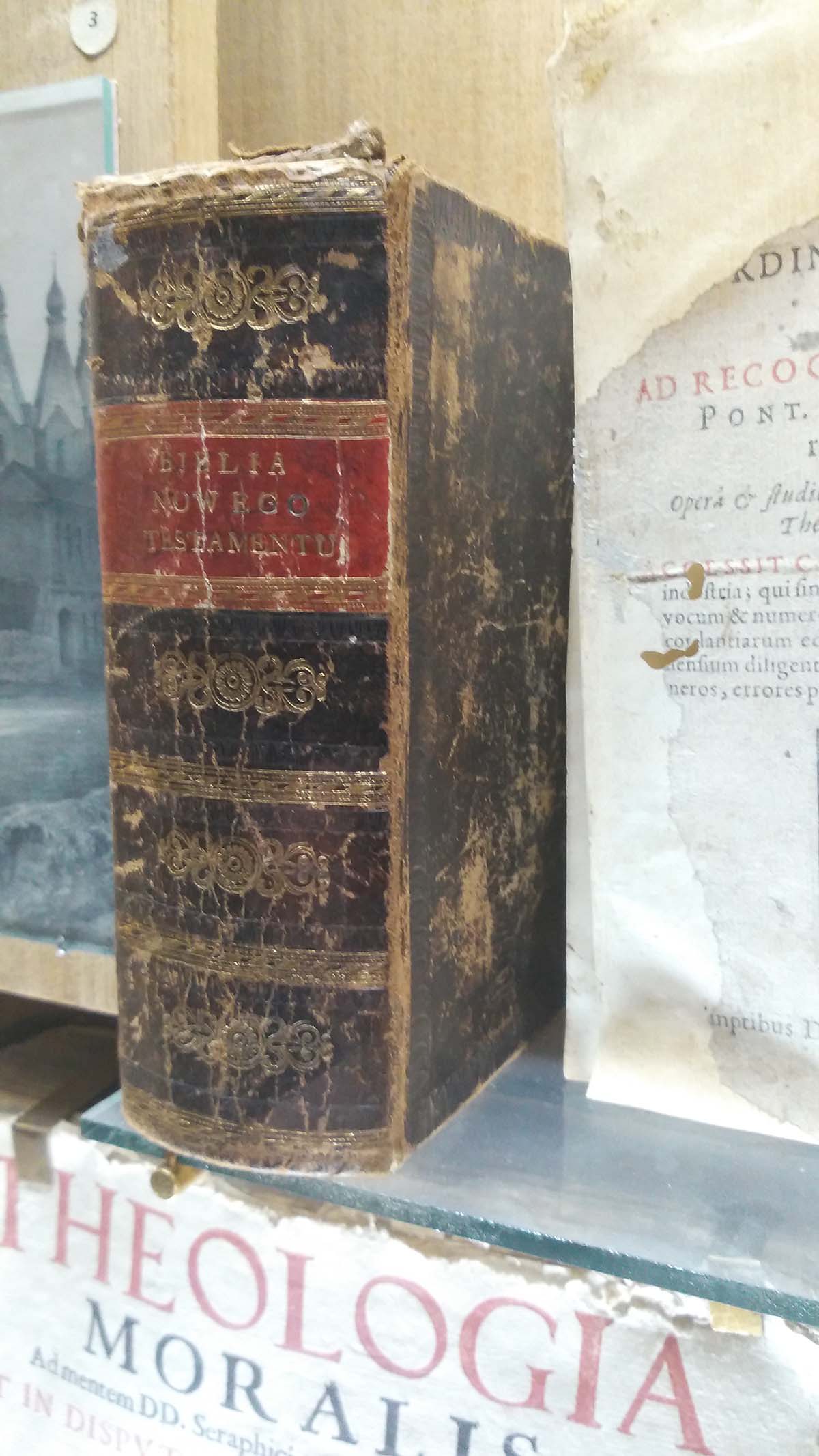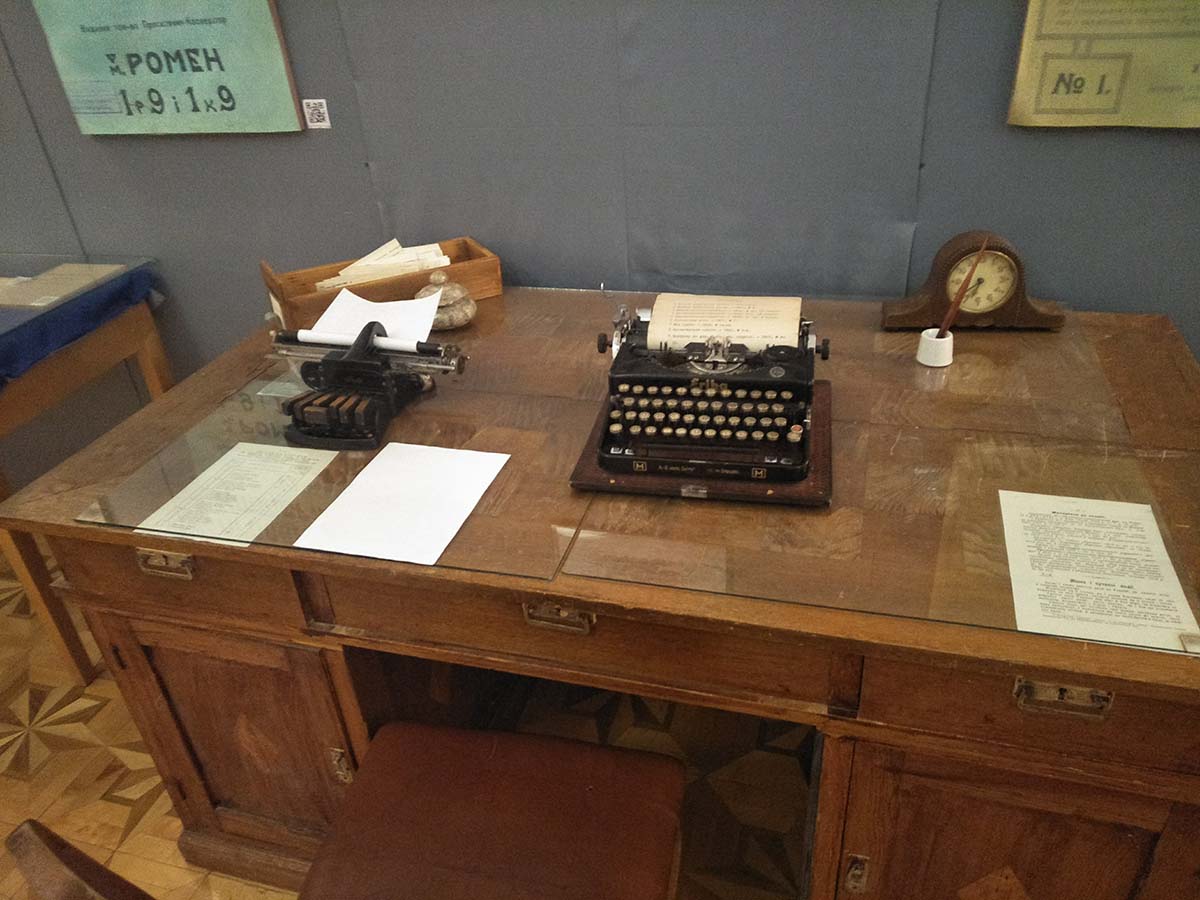The Pedagogical Museum was founded in 1901, and a year later it began its activities. During the first decade of its existence, it was kept in the premises of various educational institutions and in private homes, in particular in the premises of the Trinity People’s House (now here operetta theater). The basis of the collection of the pedagogical museum was a collection of samples of student works and handicraft and applied products, which were presented at one time by educational institutions of the Kyiv educational district at the Nizhny Novgorod exhibition. However, the lack of its own premises had a negative impact on the activities of the museum.
Since 1912, the pedagogical museum began to be housed in a building specially built for it (since 2002 it has been known as the teacher’s house), the design of which belongs to the famous Ukrainian architect Pavel Aleshin (Kovalevsky’s mansion, doctor’s house). The building is a rectangular structure with a cozy courtyard inside. Its walls are made of brick, and the external facade is lined with rare Inkerman stone. The central part of the building is decorated with a semicircular risalit, and a carved sculptural frieze is located around the perimeter at the level of the third tier. A remarkable cast-iron fence, made according to the sketches of the architect Alexander Beretti, has survived to this day.
After the February Revolution of 1917, the museum was liquidated, and its building housed many different institutions in different periods of time. In the 1930s, under the leadership of the same Pavel Aleshin, the building was completed and adapted to house the Lenin Museum, opened in 1938. In 1941, before the retreat of Soviet troops from the city, the building was mined, but the Germans managed to quickly find and defuse the explosives. During the occupation, there was a museum of ancient history here. The archaeological collection from Lavra was moved here by Dr. Grimm. In 1943-1982, the Lenin Museum operated here again.
The pedagogical museum was restored only in 1977 as a result of the reorganization of the republican pedagogical exhibition, which had functioned since 1948. In 1982, after the Lenin Museum moved to another building, the building built for the pedagogical museum was given to Kyiv teachers for a teacher’s house. The modern pedagogical museum was inaugurated in May 1987 and is located on the second floor of a building that was built specifically for it, occupying only its right wing. The museum’s funds contain more than 45,000 monuments of the history of education and culture of the peoples inhabiting the territory of Ukraine from ancient times to the present day, including monuments from the 15th-17th centuries: “Textbook of Philosophy, Geography, History” (1488), “Lithuanian Statute” (1570 ), “Phraseological Dictionary” (1598), “Apostle” (1654), “Chronicle of European Sarmatia”, “Evangelion” (1670), “Octoechos octopi, handwritten”, “Illustrated geographical atlas”, which contains 100 maps (1699 -1777), “Gospel Teaching” (1670), “Piety Rules” (1705), “New Synopsis” (1798) and many other monuments of education, which at one time were used in teaching both in fraternal schools, colleges of Ukraine, and Kiev-Mohyla Academy. The museum also contains collections of textbooks, documents, photographs, pedagogical periodicals, pedagogical manuals of the 19th and 20th centuries, materials about repressed teachers, sets of materials from teachers and scientific educators of Ukraine. Since 2009, the pedagogical museum has opened a branch of the National Museum of the History of Ukraine – the Museum of the Ukrainian Revolution of 1917-1921.
Where is the pedagogical museum (teacher’s house)?
Vladimirskaya street, 57
Mon-Fri: 10:00-17:00 (13:00-14:00 – break), Sat-Sun: closed





